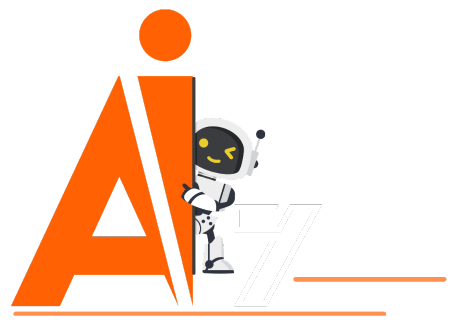So, what’s AI, anyway?
When we talk about AI or Artificial Intelligence, we’re venturing into a realm that once belonged solely to the world of sci-fi. But today, it’s a vivid reality reshaping how we live, work, and play. AI is the science and engineering of making intelligent machines and brilliant computer programs. It’s about designing machines that can think, learn, and adapt.
The Brains Behind the Machine
So, how do we give machines a “brain”? It’s all about algorithms and codes. Algorithms are like the thought processes of machines. They’re sets of rules and calculations that computers follow to perform tasks, from the simple, like solving math problems, to the complex, like translating languages or recognizing faces in photos.
But algorithms need something to work with, and that’s where data comes in. Data acts like experiences and memories for AI. Every piece of information helps the AI understand the world better, refine its algorithms and improve its task performance. The process is akin to human learning through repetition and study but at an incredibly accelerated pace.
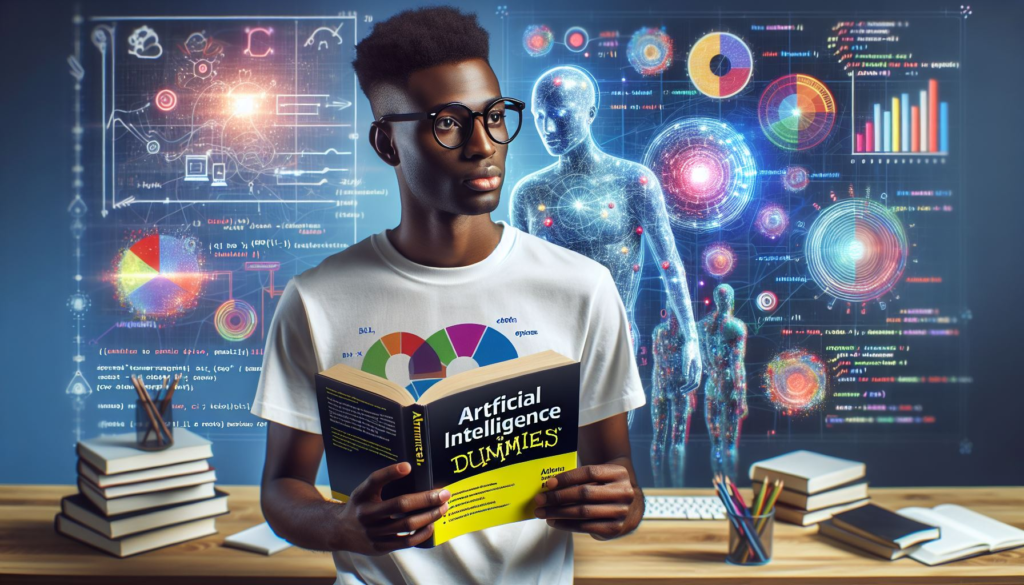
AI in Everyday Life
Hello there! You’ve come to the right place if you’re curious about AI. Let’s explore the world of artificial intelligence together! We’ll shed some light on this exciting topic clearly and engagingly. Ready to learn more about how machines are getting smarter? Let’s dive in!
Your robot buddy predicting pizza toppings or TikTok trends isn’t just a fun idea—it’s a glimpse into the everyday applications of AI. These scenarios showcase AI’s ability to analyze vast amounts of data, understand patterns, and predict future outcomes based on past behavior. Whether it’s a personal assistant app learning your schedule preferences or an entertainment platform suggesting content you might enjoy, AI is there, enhancing your daily experiences in big and small ways.
Beyond the Cool Factor: Real-World Impact
AI’s influence extends far beyond cool gadgets and convenience. It’s driving advancements in healthcare, enabling early detection of diseases and personalized medicine. It’s transforming industries by optimizing operations, predicting maintenance needs, and revolutionizing customer service. In environmental conservation, AI helps monitor endangered species and manage natural resources more efficiently.
The Ethical Dimension
As AI becomes more integrated into our lives, it raises important ethical questions. Privacy, security, and the impact on employment are hot topics. There’s a growing discussion about how to ensure that AI benefits society as a whole without exacerbating inequalities or compromising individual rights.
Looking Ahead
The future of AI is as exciting as it is uncertain. With advancements in machine learning, neural networks, and quantum computing, we’re on the cusp of even more revolutionary changes. The potential for AI to solve complex global challenges, enhance our abilities, and even explore space is limited only by our imagination—and, of course, the ethical frameworks we put in place.
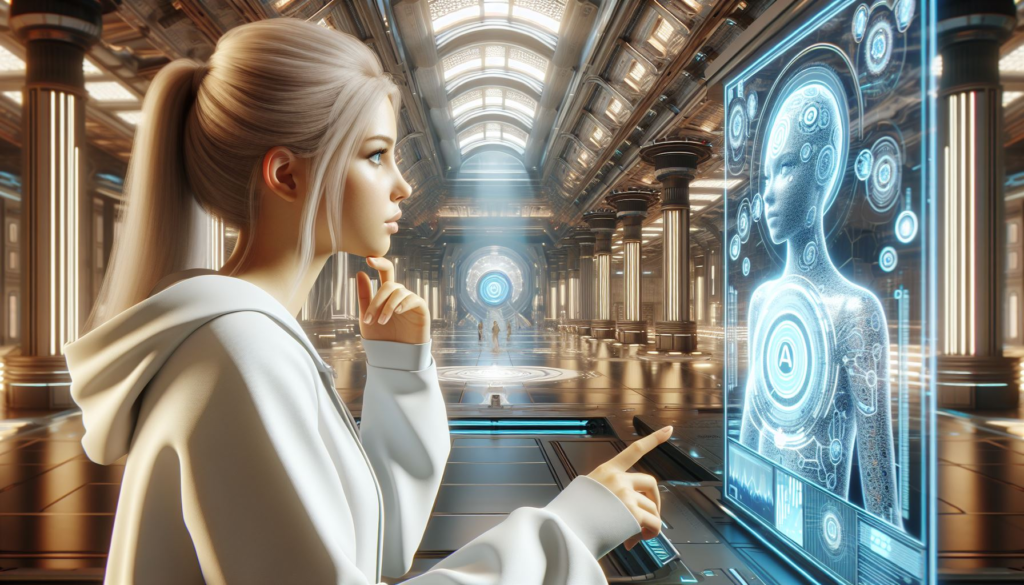
How does AI work?
At the heart of AI are algorithms. Think of algorithms as recipes, but instead of making lasagna, they solve problems. These aren’t AI-powered algorithms, which are sets of rules or instructions that tell a computer how to solve a problem. These algorithms can learn from data, the raw material that feeds AI. The more data an algorithm has, the better it can perform. Learn more about AI algorithms and data:
The Magic Behind AI: Algorithms + Data = Smart Machine
- Algorithms: These are the brains of the operation. They’re like step-by-step instructions that guide the AI in responding to different situations.
- Data: This is the food for thought. Just like you learn from reading books or watching videos, AI learns from data. The more data it has, the smarter it gets.
Think of it this way: If you wanted to teach your robot friend how to recognize cats, you’d show it thousands of cat photos (data) and give it instructions (algorithm) to identify standard cat features (whiskers, ears, meows). Over time, voila, it gets better at spotting cats!
Critical Questions You Might Be Asking
- Q: I’ve heard about AI but still need to figure out what it does. Can you explain it in a way even my grandma would understand?
- A: Absolutely! Imagine AI as a super-smart computer program that can learn and adapt to information like you do. It might help your grandma find the perfect knitting pattern online or tell her when the bus is coming. Think of it as a beneficial tool, like a calculator, but way smarter!
- Q: Okay, but how does this robot brain actually work? Is there magic involved?
- A: The magic is in the code! AI works through algorithms (think of these as super detailed instructions) and a ton of data (like lots and lots of examples). An AI might learn to tell cats and dogs apart by being shown thousands of pet pictures; it looks for patterns and features that give each animal away. The more it learns, the better it gets!
- Q: I keep hearing about robots taking over. Should I be worried?
- A: While some movies make it look scary, AI isn’t out to rule the world. It’s designed to make things easier for us – suggest a song you might like or help doctors find the best treatments. Don’t stress about robot overlords, at least not yet!
- Q: Do I even use AI without realizing it?
- A: Absolutely! When you ask your smart speaker to play music, search for something online, or get directions to that new coffee shop – that’s AI in action. It’s already pretty good at making everyday life a little AI All Around Us: From Your Coffee to Your Car (and Everything In Between!)
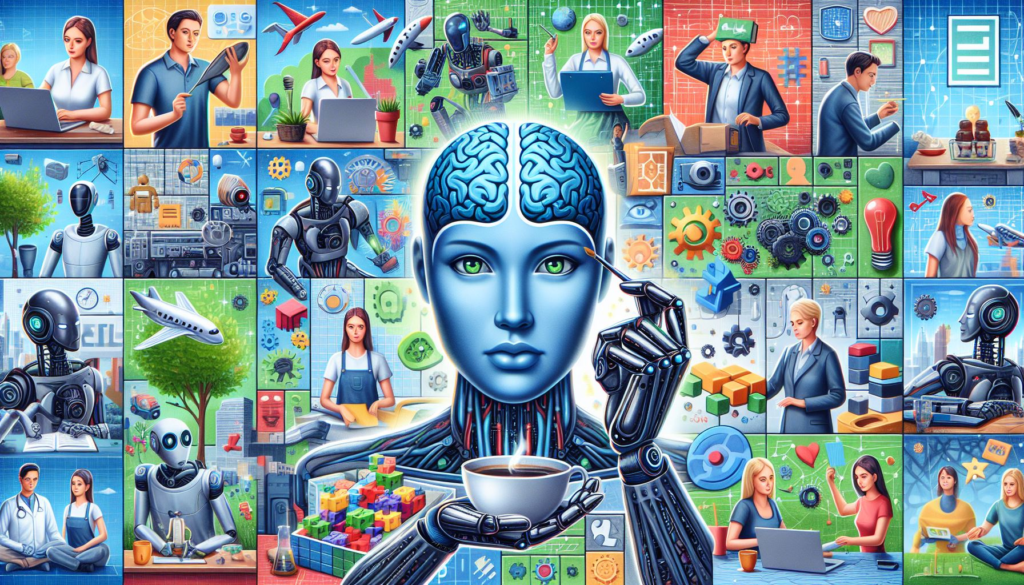
Examples of things we have that use AI
- Simple AI:
- Smartphones: AI personalizes your experience with features like photo editing suggestions, news recommendations, and intelligent battery management.
- Streaming Services: AI curates movie and music recommendations based on your watch history and preferences.
- Social Media: AI filters spam comments, powers “smart” friend suggestions, and tailors your newsfeed.
- Intermediate AI:
- Smart Homes: AI thermostats learn your habits and adjust the temperature automatically. In contrast, smart speakers control lights and answer questions using voice assistants.
- Fitness Trackers: AI analyzes your workouts, suggests personalized goals, and monitors sleep patterns.
- Email Spam Filters: AI analyzes email content to identify and block spam messages before they reach your inbox.
- Complex AI:
- Self-Driving Cars: Advanced AI algorithms analyze surroundings, predict traffic patterns, and automate driving functions (still under development and with varying levels of autonomy).
- Medical Diagnosis: AI assists doctors by analyzing medical scans, identifying potential diseases, and suggesting treatment options.
- Facial Recognition: AI unlocks smartphones, secures buildings, and helps law enforcement identify individuals.
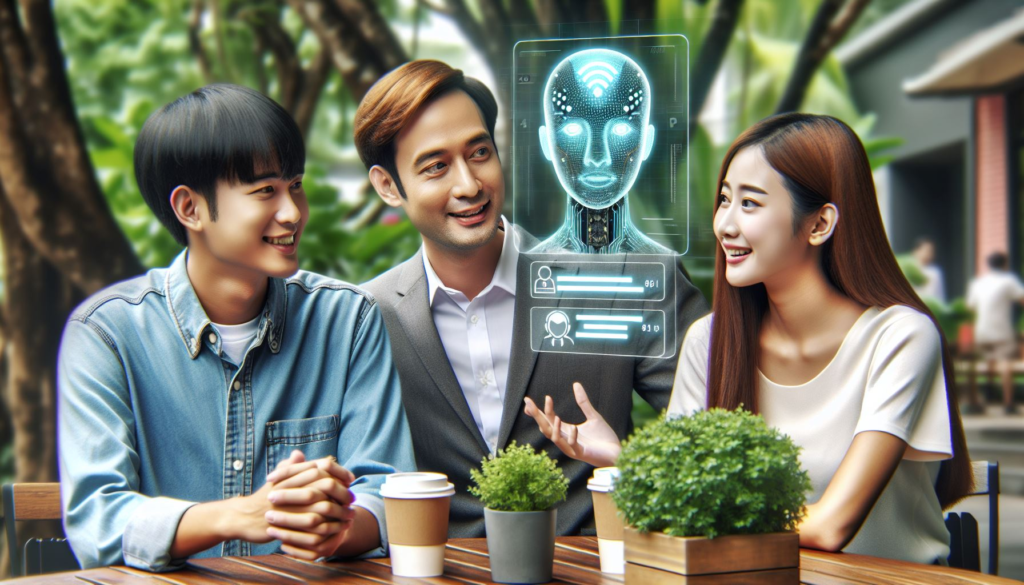
Okay, we get the AI basics. What’s next?
With a clearer picture of what AI is and how it seamlessly integrates into our daily lives, let’s take a moment to familiarize ourselves with some essential terms and definitions in the AI world. Staying up-to-date with the lingo helps us understand how AI works and empowers us to engage in meaningful conversations about its future impact. From algorithms that power decision-making processes to neural networks that mimic the human brain, the language of AI is rich and evolving. As AI continues to develop, so does the vocabulary we use to discuss it, reflecting the dynamic and innovative nature of the field. Whether you’re reading the latest tech news or discussing the ethical implications of AI, knowing these terms ensures you’re not just keeping up but also looking ahead.
15 Essential AI Terms and Definitions
| Term | Definition | Meaning | Application |
|---|---|---|---|
| Algorithm | A set of rules or instructions for solving a problem. | The brain of AI, guides decision-making processes. | Used in everything from search engines to personal assistants. |
| Artificial Neural Networks (ANNs) | Computer systems are modeled on the human brain’s network of neurons. | They help in understanding patterns and solving problems by mimicking human thought processes. | Image and speech recognition, and natural language processing. |
| Machine Learning (ML) | A subset of AI that allows computers to learn from data and improve over time. | Computers make decisions based on data without explicit programming. | Predictive analytics, spam filtering, and recommendation systems. |
| Deep Learning | An ML technique using neural networks with many layers. | It analyzes data with a deep level of understanding for accuracy. | Advanced voice recognition, image classification, and autonomous vehicles. |
| Natural Language Processing (NLP) | AI’s ability to understand and generate human language. | It helps computers comprehend, interpret, and mimic human languages. | Chatbots, language translation apps, and voice-activated assistants. |
| Computer Vision | AI trains computers to interpret and understand visual information. | Allows machines to identify objects and make sense of visual data. | Facial recognition, medical imaging, and automated quality control. |
| Reinforcement Learning | A machine learning strategy is one where an agent learns to behave in an environment by performing actions and seeing the results. | Learning through trial and error, using rewards as signals for good behavior. | Robotics, game playing, and navigation systems. |
| Supervised Learning | ML where the model is trained on a labeled dataset. | The model learns from examples with known outcomes to make predictions. | Spam detection in emails and weather forecasting. |
| Unsupervised Learning | ML where the model learns patterns from unlabeled data. | Finds hidden structures in data without explicit instruction. | Customer segmentation and anomaly detection in network security. |
| Ethics in AI | The study of moral implications and responsibilities in AI development and deployment. | Ensuring AI technologies benefit humanity and minimize harm. | Guidelines for AI use in autonomous vehicles and decision-making systems. |
| Data Mining | The process of discovering patterns and knowledge from large amounts of data. | Extracts valuable insights from datasets to inform decision-making. | Market analysis, fraud detection, and customer relationship management. |
| Predictive Analytics | Using data, statistical algorithms, and ML techniques to identify the likelihood of future outcomes. | Predicts future events based on historical data. | Forecasting customer behavior, stock market trends, and risk management. |
| Cognitive Computing | A subset of AI that attempts to mimic human thought processes. | Enhances human decision-making by providing insights and recommendations. | Healthcare for personalized medicine, finance for trading insights. |
| Robotic Process Automation (RPA) | The use of software with AI and ML capabilities to handle repetitive tasks. | Automates routine tasks to save time and reduce errors. | Data entry, processing transactions, and handling customer queries. |
| Chatbots | AI software that can simulate a conversation with human users. | Provides automated responses to user inquiries in a conversational manner. | Customer service, virtual assistance, and information retrieval. |
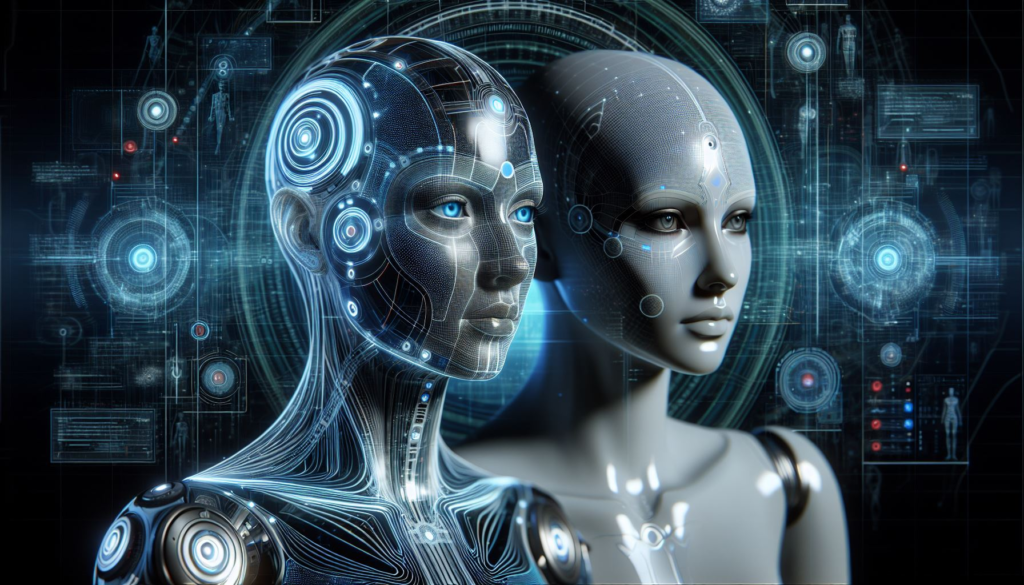
Wrapping Up: Your AI Adventure Starts Here
So, we’ve taken a whirlwind tour through the fantastic landscape of AI, mixing a dash of humor with heaps of insights. This isn’t just about machines doing our bidding; it’s about unlocking a future where AI amplifies our human experience. From queuing up the perfect playlist to navigating the roads less traveled, AI is not just knocking on the door; it’s already part of the family.
This website isn’t just a stepping stone—it’s your gateway to the infinite possibilities that AI brings. Think of it as your personal AI concierge, ready to guide you through the nooks and crannies of artificial intelligence. Whether understanding the nuts and bolts of machine learning or exploring the ethical dilemmas of digital consciousness, we’re here to light up the path.
And hey, this is just the beginning. The AI journey is as boundless as your curiosity. With each click and article, you’re not just learning but preparing to be part of the AI revolution. You may be the next visionary to revolutionize how we interact with technology. Or you’ll be the ethical compass guiding AI towards a future that benefits all of humanity.
So, what’s next? Dive deeper, ask questions, experiment, and engage. The world of AI is yours to explore, and this website is your trusted companion. Let’s not just embrace the future; let’s help shape it. Because when it comes to AI, the only limit is our imagination. Ready to explore further? The universe of AI awaits.
Resources
Websites and Online Platforms
- Coursera:
- Search for “AI For Everyone” by Andrew Ng. It’s a great introductory course for understanding AI’s impact without getting into the technicalities.
- edX:
- Look up “Introduction to Artificial Intelligence (AI)”. This course offers insights into the basics of AI and its applications.
- Kaggle:
- Perfect for hands-on learning. Search for “Intro to Machine Learning” courses and participate in beginners’ competitions to apply what you learn.
- Medium:
- A hub for AI articles. Search for “AI basics” or “Machine Learning for beginners” to find easily digestible content by AI experts and enthusiasts.
YouTube Channels
- Simplilearn:
- Offers a range of videos on AI and machine learning basics, trends, and career advice.
- 3Blue1Brown:
- Known for breaking down complex mathematical concepts visually, including deep dives into neural networks.
- Siraj Raval:
- Offers tutorials and explanations on various AI topics, making them accessible to beginners.
- Lex Fridman:
- Hosts interviews with leading AI researchers, providing deep insights into where AI technology is headed.
Podcasts
- AI in Business:
- Discover how AI is transforming industries and what it means for the future of business.
- The AI Alignment Podcast:
- Explores the crucial topic of aligning advanced AI technologies with human values and ethics.
Books
- “Artificial Intelligence: A Guide for Thinking Humans” by Melanie Mitchell:
- Provides a critical examination of the current state of AI and its potential future.
- “Life 3.0: Being Human in the Age of Artificial Intelligence” by Max Tegmark:
- Discusses the future of AI and its impact on the very fabric of human existence.
- “Hello World: Being Human in the Age of Algorithms” by Hannah Fry:
- Offers an accessible and entertaining look at how algorithms and AI affect our daily lives.
Online Communities
- Reddit:
- Subreddits like r/MachineLearning, r/Artificial, and r/LearnMachineLearning are great places to ask questions, share resources, and connect with other AI enthusiasts.
- GitHub:
- Explore and contribute to AI and machine learning projects to learn by doing.
